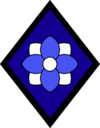NV The Friction Day: Difference between revisions
No edit summary |
No edit summary |
||
| (One intermediate revision by the same user not shown) | |||
| Line 42: | Line 42: | ||
The unrest began with a series of student occupation protests against authoritarianism, monarchism, imperialism and traditional institutions. Heavy police repression of the protesters led the country's trade union confederations to call for sympathy strikes, which spread far more quickly than expected to involve 2.3 million people, more than 20% of the total population of Norvinia at the time. The movement was characterized by spontaneous and decentralized wildcat disposition; this created a contrast and at times even conflict internally amongst various faction and the parties involved. It was the largest protest ever attempted in Norvinia, and the first nationwide wildcat general strike. | The unrest began with a series of student occupation protests against authoritarianism, monarchism, imperialism and traditional institutions. Heavy police repression of the protesters led the country's trade union confederations to call for sympathy strikes, which spread far more quickly than expected to involve 2.3 million people, more than 20% of the total population of Norvinia at the time. The movement was characterized by spontaneous and decentralized wildcat disposition; this created a contrast and at times even conflict internally amongst various faction and the parties involved. It was the largest protest ever attempted in Norvinia, and the first nationwide wildcat general strike. | ||
The student occupations and general strikes initiated across Norvinia were met with forceful confrontation by Royalist Factions and police. The King Mortimer administration's attempts to quell those strikes by police action only inflamed the situation further, leading to street battles with the police and even militias across the country. | |||
The events of Friction Days continue to influence Norvish society. The period is considered a cultural, social and political turning point in the history of the country. The first president, Alnwick Arveton Jibrana, was of the negotiators of the time—later stated that the movement had succeeded "as a revolution, not a civil war" | |||
==Background== | ==Background== | ||
| Line 50: | Line 54: | ||
===Charter of the New Republic=== | ===Charter of the New Republic=== | ||
==Aftermath & Impact== | ==Aftermath & Impact== | ||
{{Template:Norvinia info pages}} | |||
{{Template:Anteria info pages}} | |||
Latest revision as of 01:58, 15 July 2022
| The Friction Days | |||||
|---|---|---|---|---|---|
Clockwise from top:
| |||||
| |||||
| Belligerents | |||||
Supported By: Royalist Faction |
| ||||
The Friction Days is a term used for a period of social and political turmoil in Norvinia that lasted from the late 1920s until the late 1930s, marked by a wave of both far-left and far-right incidents of political terrorism. Beginning in April 1917, a period of civil unrest occurred throughout the country, lasting some three years long and punctuated by mass demonstrations, general strikes, as well as the occupation of universities and factories. At the height of events, the economy and civil stability in the country became scarce. The protests reached such a point that most political leaders feared civil war or revolution; the royalist government swifted reacted to ceased out the unrest under King Mortimer's order which few years before had meddled in public welfare system and established strict rules of civil obedience.
The unrest began with a series of student occupation protests against authoritarianism, monarchism, imperialism and traditional institutions. Heavy police repression of the protesters led the country's trade union confederations to call for sympathy strikes, which spread far more quickly than expected to involve 2.3 million people, more than 20% of the total population of Norvinia at the time. The movement was characterized by spontaneous and decentralized wildcat disposition; this created a contrast and at times even conflict internally amongst various faction and the parties involved. It was the largest protest ever attempted in Norvinia, and the first nationwide wildcat general strike.
The student occupations and general strikes initiated across Norvinia were met with forceful confrontation by Royalist Factions and police. The King Mortimer administration's attempts to quell those strikes by police action only inflamed the situation further, leading to street battles with the police and even militias across the country.
The events of Friction Days continue to influence Norvish society. The period is considered a cultural, social and political turning point in the history of the country. The first president, Alnwick Arveton Jibrana, was of the negotiators of the time—later stated that the movement had succeeded "as a revolution, not a civil war"
Background
Timeline of Events
1st Phase
2nd Phase
3rd Phase
Charter of the New Republic
Aftermath & Impact




